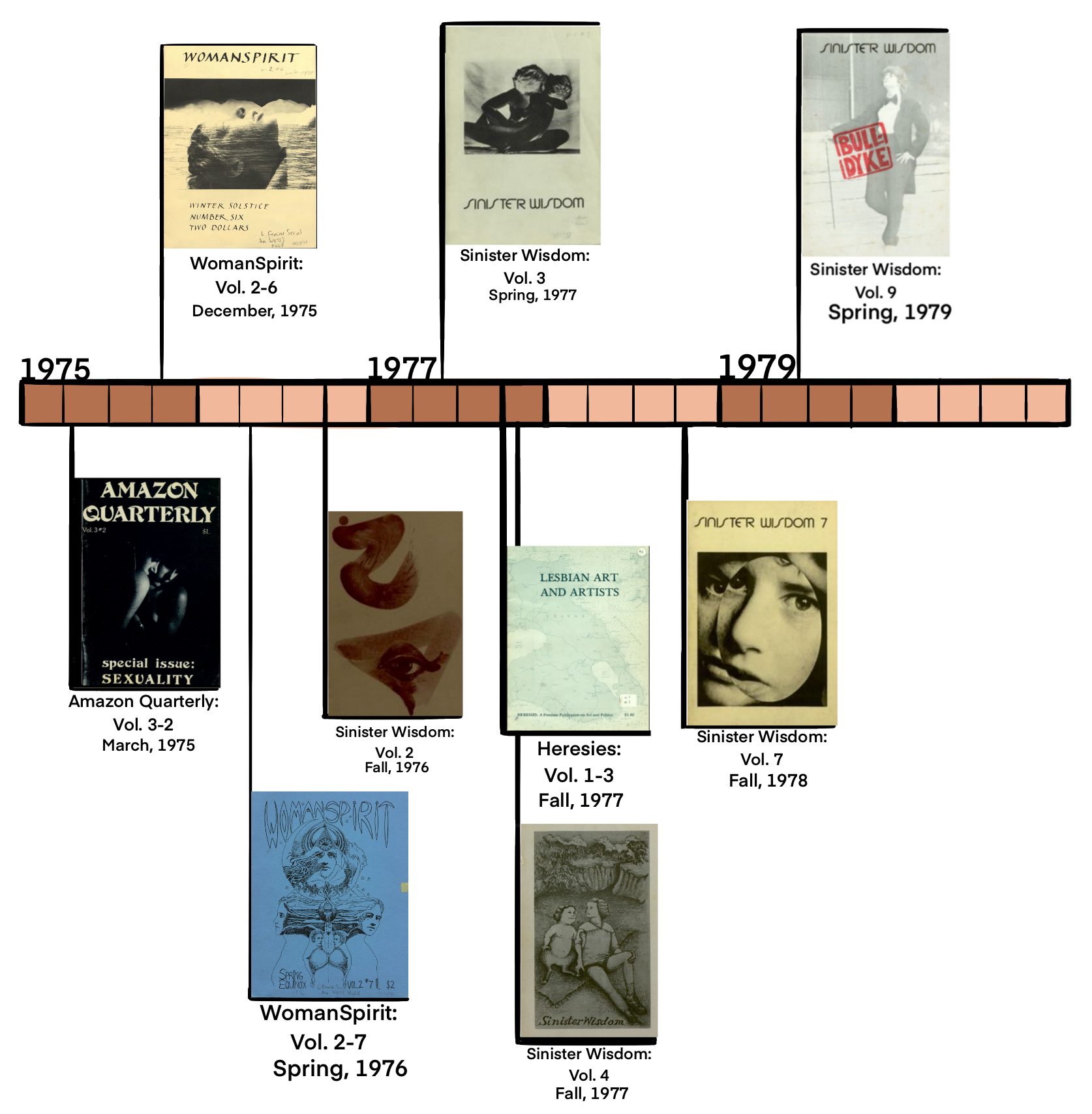Jacqueline Lapidus was active in the Paris women’s movement, but submitted many of her pieces to American feminist presses (Desmoines and Nicholson 95). Lapidus was primarily a poet, but did occasionally review other feminst literary works. Her poetry was featured in WomanSpirit, Sinister Wisdom, Conditions, Heresies: A Feminist Publication on Arts & Politics, Big Mama Rag, 13th Moon, as well as Sojourner.
In her work, Lapidus frequently takes a cultural canon, such a as a nursery rhyme or myth, and twists it to illuminate a feminist perspective. Sinister Wisdom’s ninth issue, published in the spring of 1979, featured two of Lapidus’s poems. Each took Greek stories and reimagined them under a feminist lens. The first, “Thirteenth Moon,” mentions the Greek goddesses Persephone, Artemis, and Hera. What is most interesting is Lapidus’ representation of Hera. In the third section of the poem, Lapidus writes,
where Hera reigns
behind her curtained face her courage flames
blood simmers in her womb
heavy as soup
spoonful by spoonful
she feeds the baby secrets
it was not Zeus who lived the cycle of transformations!
it was I who loved Leda – Io – Danaë! (Lapidus, “Thirteenth Moon,” lines 33-41)
In Greek mythology, Leda is the mother of Helen of Troy, the woman who was the cause of the war between Troy and Sparta (Gill). Unlike most Greek figures, Leda’s genealogy is unclear: her father is known but her mother is not. Io was the first priestess of Hera, with whom Zeus, Hera’s husband, became infatuated. To protect Io from Hera’s wrath, Zeus turned Io into a white heifer (“Io”). Danaë was the mother of Perseus (“Danae in Greek Mythology”). Lapidus’ claim that Hera was the one who loved all three of these women, has radical implications, suggesting that Hera, the goddess of marriage, is a queer woman. Typically, Artemis is the Greek symbol of queer solidarity, but when Lapidus poses Hera this way, she becomes a symbol for queer women with an entirely different set of connotations than those of Artemis. Hera is the queen of the gods of Olympus, the most powerful female goddess in the pantheon, and she is queer. For lesbians in America, this is a novel symbol of the power of lesbian women. Furthermore, in the case of Leda and Danaë, Hera is the grandmother of powerful figures: Helen, a woman capable of bringing entire nations to war, and Perseus, the slayer of the Gorgon Medusa. This correlation illuminates the power of the maternal influence, even if it is not readily apparent in this generation. In the case of Io, it paints Zeus as a jealous king who transformed Io out of spite. This parallels the way in which the patriarchy condemns queer women, and then reorients the story to paint them as the savior of the story.

Timeline of some of Jacqueline Lapidus’ Features in Feminist Periodicals (1975-1980)
